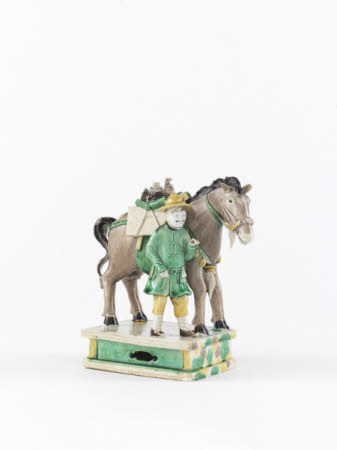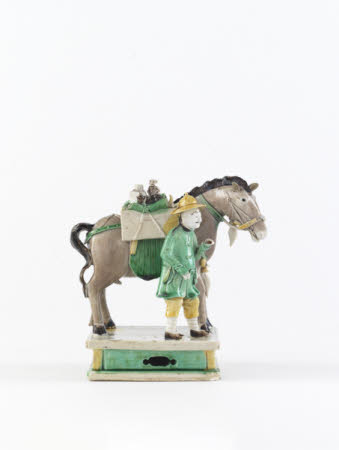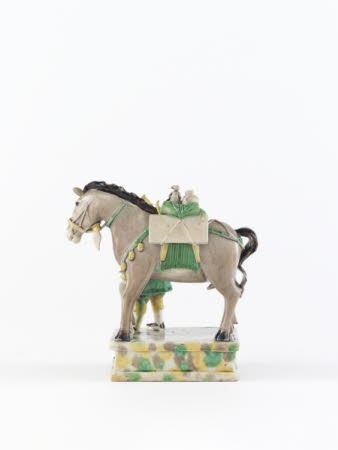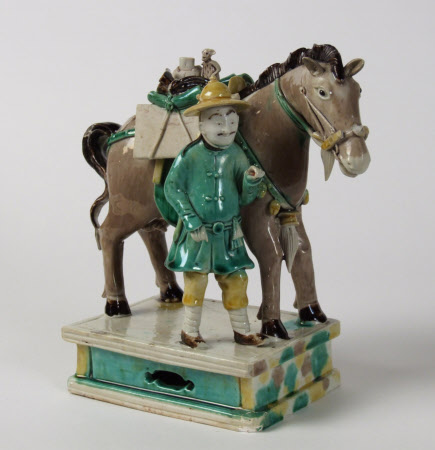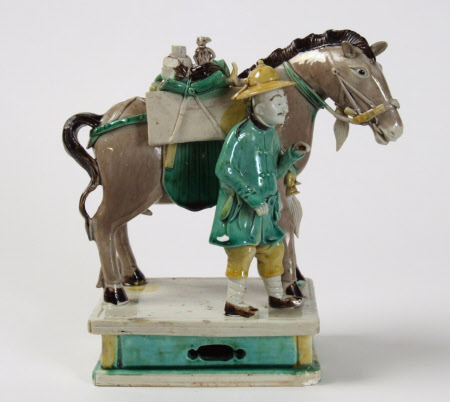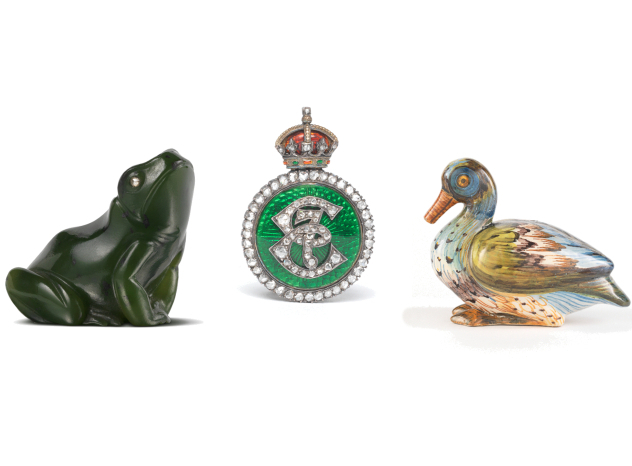Figural group
Category
Ceramics
Date
1662 - 1722
Materials
Porcelain, enamel, lead glaze.
Measurements
16.2 cm (H), 16.2 cm (W), 8.1 cm (D)
Place of origin
Jingdezhen
Order this imageCollection
Polesden Lacey, Surrey
NT 1245681
Summary
Porcelain figure group, Chinese, Kangxi period (1662–1722). Representing a man leading a packhorse, on a rectangular base with lobed openings in the long sides, decorated with green, yellow and brown enamels on the biscuit (or unglazed surface) and with a transparent lead glaze on details like faces and hands, originally part of a larger group, probably made in Jingdezhen, Jiangxi province, China.
Full description
The sancai or ‘three colours’ glaze palette, used on earthenware during the Tang dynasty (618–907), was revived for use on porcelain during the Kangxi reign, c. 1700, as an antiquarian style. A similar figural group from the Pantia Ralli collection, Ashtead Park, Surrey, was offered for sale at auction at Sotheby’s, London, 7 May 1925, lot 25: 'A man with a packhorse, of extremely fine modelling, with brilliant green, yellow, aubergine and dark brown glazes, on square base, 6 1/2 in. long, K'ang-hsi.' See also NT 1245682, an associated figural group representing a palanquin. (Emile de Bruijn, April 2022)
Provenance
Bequeathed to the National Trust by Dame Margaret Greville, DBE (1863-1942).
